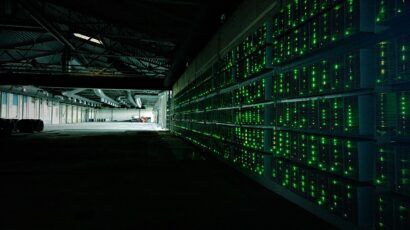Building information resilience to reinforce arms control
By Kate Zander, Mayra Ameneiros, Ance Baura, Tomáš A. Nagy | August 21, 2023
 Animation by causa.studio
Animation by causa.studio
The erosion of norms against the development and use of weapons of mass destruction is evident and due, at least in part, to a security environment deliberately muddled by disinformation campaigns. For example, Russia and Syria have used not only social media platforms and national media outlets but also formal assemblies like the Organisation for the Prohibition of Chemical Weapons (OPCW) and the United Nations to actively spread disinformation about chemical weapons attacks carried out by Syrian authorities. During official multilateral meetings and side events, they have made false accusations via fake “experts” and “whistleblowers” supposedly working at the OPCW, “leaked” documents, and fabricated videos and photos. The international community’s reluctance to hold Syria accountable for the use of chemical weapons, despite the existence of OPCW-confirmed evidence, is compounded by disinformation campaigns that sow doubt and confusion. Similarly, Russia used the Biological and Toxins Weapons Convention mechanisms to air its unsubstantiated allegations that Ukraine and the United States were developing biological weapons, which has delayed important discussions on strengthening the convention.
The challenge of countering disinformation is its rhizomatic nature: It is impossible to solve the problem by responding to every false claim, because the system that makes disinformation so pervasive is highly interconnected and largely hidden from view, like an underground network of plant roots. The best way to kill a disinformation rhizome or prevent its spread is to make the environment inhospitable to it by building information resilience.
A community that is well-informed and able to discern fact from fiction will be more resilient because fabricated information is less readily accepted and spread as fact, minimizing its disruptive power. The information resilience of the arms control community depends on the strengths and capacities of individuals, organizations, and governments to not only root out disinformation but also spread compelling, accurate, and truthful information so that disinformation cannot take hold.
Disinformation undermines arms control. Disinformation campaigns—particularly those that include false accusations regarding the proliferation and use of chemical, biological, radiological, and nuclear weapons—undermine arms control architectures and norms by sowing distrust, confusion, and discord; establishing plausible deniability; justifying aggressive actions; and undermining governments and alliances.
Disinformation is not new, but rapid changes in the “global reach, unmatchable speed, targeting ability, and lower standards of reliability/quality/accountability compared to traditional news media” enabled by social media platforms make it more virulent today than ever before.
Russia’s recent disinformation campaigns readily demonstrate how disinformation can be used to destabilize the security environment and undermine arms control regimes. Its persistent allegations that Ukraine plans to use chemicals as weapons of war are false flags intended to justify its actions and confuse attribution of wrongdoing. Russia has also falsely claimed the United States has been developing biological weapons at Ukrainian public health laboratories, though the two countries signed a collaboration agreement in 2005 to prevent the proliferation of biological weapons. Similarly, Russia’s ill-founded claim that Ukraine is secretly developing nuclear weapons from the technological remnants of the Soviet-era nuclear program remaining in Ukraine served as a pretext for Putin’s invasion.
In the international security arena, the current information ecosystem has shifted from a battle between great-power spokespeople to one that leverages myriad stakeholders to influence political processes. A single social media post can initiate a cascade with the potential to erode the political will to pursue negotiations, ratify an agreement, or express compliance concerns.
Proactively nurturing an information ecosystem that is resilient to disinformation will improve decision making on national and international levels and lead to more balanced strategic decisions, shifting arms control dynamics. It may also have the power to renew trust in existing mechanisms and build the confidence needed to pursue new arms control architectures.
Recommendations for resilience. An inspection of recent Russian disinformation campaigns involving chemical, biological, and radiological weapons suggests the mere execution of established processes laid out in formal agreements can have stabilizing effects. For example, the International Atomic Energy Agency’s (IAEA) swift inspection of activities at nuclear facilities cited in Russian claims verified that no undeclared nuclear materials or activities were found in Ukraine. The IAEA was able to use its standing as the world’s premier authority to shape public discourse and arrest the momentum of Russia’s “dirty bomb” claims. The leadership of all nations interested in minimizing the impact of weapons of mass destruction should support the impartial operation of the multilateral organizations responsible for upholding these agreements.
We offer five key recommendations for how these organizations can help build information resilience:
Leverage existing verification architectures to address conflict and minimize misperceptions. Allowing all states to be heard is a key norm of the UN system. Denying any state a platform to raise its concerns may increase the sympathy of other states and embolden isolated actors. Organizations like the IAEA and the OPCW contribute to stabilization by providing a forum for considering claims and grievances—even false ones—and establishing mechanisms for investigating potential violations. Another important aspect of the global standing of these organizations is their natural normative authority, which derives both from their formal (mandated) missions and from their decades-long history of professionalism and leadership. States should continue to leverage these arms-control mechanisms for raising compliance concerns and sharing information.
Provide venues for facilitated discussions designed to reduce misperceptions and identify common interests. While the leadership and staff of multilateral organizations must remain impartial, they could hold working-level facilitated discussions that explore differences in perception and identify common interests. The Harvard Negotiation Project advises this approach can create space for innovative solutions by reducing focus on entrenched and sometimes arbitrary positions.
Creating options for mutual gain might be more readily done outside the restrictions of any individual arms control or verification regime. The United Nations is pursuing multiple initiatives aimed at countering disinformation through international cooperation and promoting media and information literacy. In 2021, Secretary-General António Guterres launched the Our Common Agenda report, a vision for the future of global cooperation. In 2022, the Secretary-General released a Countering Disinformation report for the promotion and protection of human rights and fundamental freedoms.
The 2021 report states that “the ability to cause large-scale disinformation and undermine scientifically established facts is an existential risk to humanity” and urges acceleration of common efforts “to produce and disseminate reliable and verified information,” with the United Nations playing a key role in these efforts. It proposes a variety of steps, including “support for public interest and independent media, regulation of social media, strengthening freedom of information or right to information laws and ensuring a prominent voice for science and expertise, for example through the representation of science commissions in decision-making.” The report also mentions “a global code of conduct that promotes integrity in public information” that could be explored with relevant actors.
All these steps, if implemented, would strengthen resilience against disinformation and reinforce arms control. A multilateral approach with clear and practical objectives that welcomes the participation of all interested parties—while challenging—could incrementally shift the paradigm in a positive direction.
Establish a multilateral initiative designed to foster information resilience. This concept, loosely based on the Creating an Environment for Nuclear Disarmament initiative, would offer a forum for identifying practical steps to advance information resilience. An initiating party might consider inviting all interested parties, via a working paper submitted at the next UN Disarmament Conference, to establish working groups focused on identifying and countering disinformation, minimizing its reach, improving media literacy among arms control professionals, and developing standards of conduct and information reliability for arms control and verification organizations.
Improve strategic communication about arms control-related topics. Policy makers should seek to improve communication about arms control by providing consistent and accurate information using compelling messaging, visuals, and preferred media. Disinformation campaigns benefit from savvy communication strategies and information technology acumen; states should use the same mechanisms to their benefit by engaging and collaborating with “influencers” or high-impact communicators via social media.
Sponsors of capacity-building projects that aim to prevent WMD proliferation and promote treaty compliance should communicate potential disinformation pitfalls to partners and develop proactive strategic communication plans to address them. These discussions should seek to reveal disparities in understanding or expectations, and to facilitate coordination across the life of the project and during a crisis. Plans could include opportunities for non-governmental organizations, academia, and the press to see these projects in action by offering site tours, attending partner organization training, and interviews with project spokespeople. These measures could amplify strategic messaging, improve reporting speed and accuracy, provide existing and potential program partners with solid justification for their engagement, and reduce the number of easy disinformation targets by enhancing transparency.
Provide financial support to protect critical sources of information. States should support protecting the sources of information they rely on to demonstrate compliance and enable verification. In its summit declaration in 2016, NATO recognized cyberspace as a new domain of war. Two years later, the attempted hacking of the OPCW by Russian military intelligence officers highlighted the importance of improving multilateral organizations’ cybersecurity capabilities and protecting critical arms control-related information to reduce the likelihood of misuse.
As a final note, it is worth mentioning that young people are reportedly disaffected by the topic of arms control; “they don’t see themselves as agents of change” in this arena, and the shroud of disinformation only exacerbates the problem. To ensure the fight against disinformation’s deleterious effects on geopolitical stability and arms control is sustained over time, arms control professionals must encourage younger generations to pursue careers in arms control and disarmament. Governments will continue to need smart, invested professionals to develop creative proposals tailored to an information ecosystem that younger generations understand better than anyone else.
The United Nations Office for Disarmament Affairs has several initiatives that seek to address this issue, such as the Youth for Biosecurity Initiative, the Youth4Disarmament Initiative, and the UN Disarmament Fellowship. Developing resilience to disinformation will not bring adversaries to the table to talk about strategic arms reductions. But a multi-faceted approach to creating a resilient information ecosystem can shape the environment and promote stability that reinforces effective negotiation and implementation of arms control agreements and initiatives.
Editor’s note: This article is adapted from a more extended policy brief prepared during the authors’ recently completed fellowships at the Arms Control Negotiation Academy (ACONA).
Together, we make the world safer.
The Bulletin elevates expert voices above the noise. But as an independent nonprofit organization, our operations depend on the support of readers like you. Help us continue to deliver quality journalism that holds leaders accountable. Your support of our work at any level is important. In return, we promise our coverage will be understandable, influential, vigilant, solution-oriented, and fair-minded. Together we can make a difference.
Keywords: Disinformation, arms control
Topics: Biosecurity, Disruptive Technologies, Nuclear Weapons, Opinion, Voices of Tomorrow


















